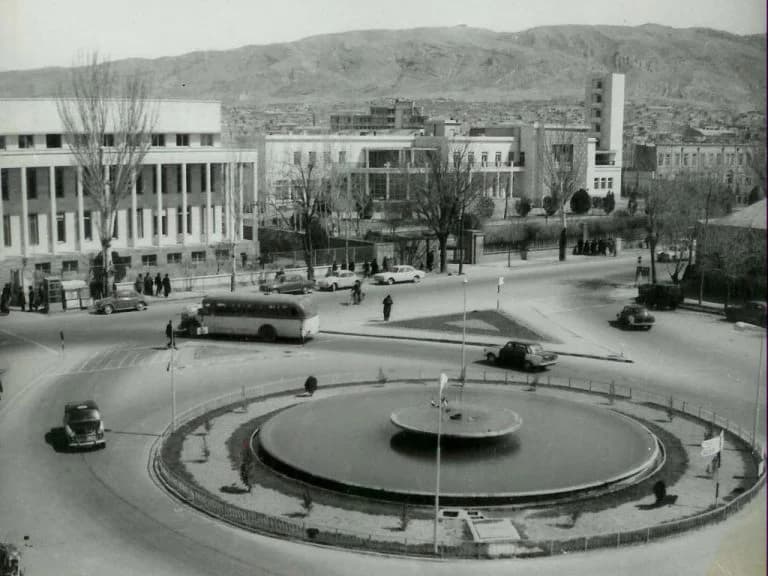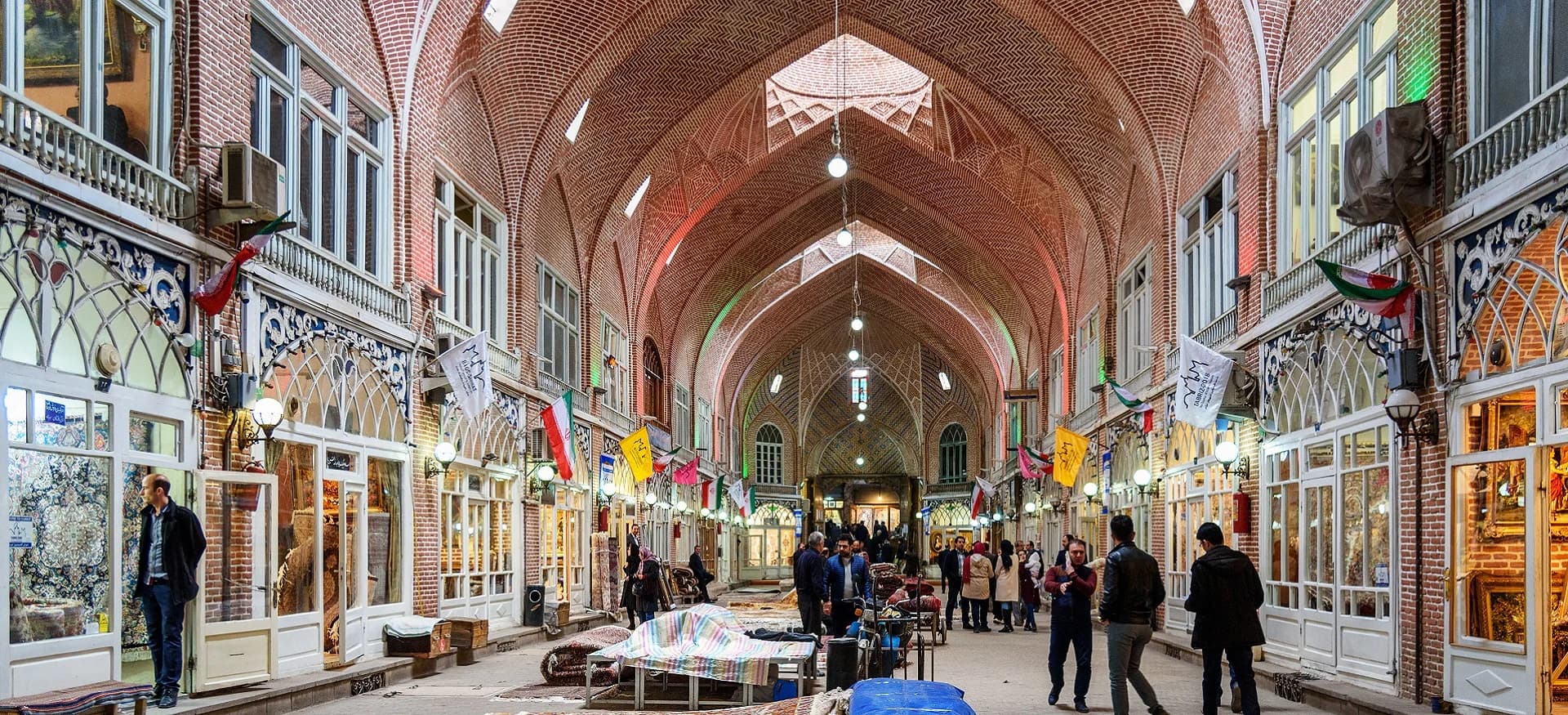East Azerbaijan Province is the largest and most populous province in the northwestern region of Iran. This province consists of 21 counties and cities including Tabriz, which is the capital city of East Azerbaijan is Tabriz.
As the historical capital and largest city in northwestern Iran, Tabriz city is one of the most important cities in the country with a rich cultural background. There are a variety of tourism, ecotourism, and recreational sites in this city. Tabriz is the third-largest city in Iran and apart from historical buildings and museums, it also enjoys lush nature, especially in spring and summer.

As the second industrial city after Tehran, Tabriz’s industrial development is the cause of extensive immigration to this city. Tabriz is the administrative, commercial, political, industrial, cultural, and military center of Azerbaijan. The main industrial products in this area are foodstuffs, chemicals, non-metallic minerals, basic metals, textiles, and carpet machinery. Tabriz has always been at the top of the Iranian trade route to the West. Being located on the Silk Road has added to the city’s culture and art.
Tabriz Tourism Attractions
With the rich history of the city of Tabriz, there are many historical monuments in this city. Repeated foreign attacks and natural disasters such as earthquakes and floods have ruined many of Tabriz’s historical monuments. The historical monuments left in the city are mostly related to the Ilkhanid, Safavid, and Qajar eras.

El Goli Building
The large historical park of El Goli is located in the southeast region of Tabriz. The park’s square artificial lake is surrounded by a sidewalk on four sides. The building located in the middle of the lake has the traditional architecture of Iranian Azerbaijan. The construction of the pool in the park began during the Aq Qoyunlu Dynasty. According to El Goli Park’s name, El means ‘people’ and Gol means ‘pool’ in the Turkish language. Therefore, El Goli means a pool that belongs to people.
Arg Alishah of Tabriz
Built in the 14th century, during the Ilkhanate era; The structure was initially a compound, containing a great vaulted mosque, adjoining prayer halls and libraries, a vast courtyard containing a huge reflecting pool, and a mausoleum.
Blue Mosque
The historic mosque “Blue Mosque” was constructed in 1465 upon the order of Jahan Shah, ruler of Kara Koyunlu. As one of the most prominent masterpieces of Islamic architecture, this mosque dates back to the 9th century. Damaged by the (1780 AD) earthquake, leading to the collapse of the mosque’s dome. The mosque remained in ruins for more than 150 years until it was partly rebuilt in 1318 AH.
Constitution House of Tabriz
Khaneh Mashrouteh or the Constitution House of Tabriz, is a historical edifice located next to the Great Bazaar of Tabriz. This house was used as a gathering place for the leaders, activists, and sympathizers of the Constitutional Revolution (before and after). Among them, the most famous people were Sattar Khan and Bagher Khan. The most beautiful part of the house is a skylight and corridor decorated with colorful glass and mirrors.
Constitution Museum
Opened in 1996, the Constitution Museum is located in the Constitution House of Tabriz. In this museum, you could find sculptures of famous Constitutional Revolutionaries, their personal belongings, and their weapons as well as several issues of the underground newspaper of the revolution, a printing machine that was used in the house, and numerous photos from the revolution. A room in the house has been dedicated to the role women played in the Constitutional Revolution.
Grand Bazaar of Tabriz
The grand bazaar of Tabriz is known as the world's largest roofed bazaar. It is also the fastest roofed market in the world. Registered at the UNESCO World Heritage Sites, it is one of the most beautiful markets in Iran. During the Silk Road, this bazaar was of great commercial importance, later flourishing in the Safavid dynasty. The bazaar consists of schools, mosques, and historical caravanserais which are built with brick facades, beautiful domes, and arches.

Azerbaijan Museum
The Azerbaijan Museum is located on Imam Khomeini Avenue and is noted for its wide collection of historically valuable vestiges. Housing over 2,300 antique pieces, around 100 handwritten books, 2,500 printed historical books, and several others relating to archeology and scientific fields. The museum gets approximately 100,000 visitors annually.
Municipality Museum
Opened in 2007, the Municipality Museum is located in Tabriz Municipality Palace or the Saat Tower. In the museum, you could find historical maps and photos of Tabriz as well as antiques like the first taxi cabs.
Qajar Museum
The Qajar Museum was opened in 2006, located in the Garousi Traditional House. The museum showcases old coins, weapons, porcelain, glass dishes, Khatam (inlaid wooden objects) & musical instruments.
Saint Mary Church of Tabriz
As one of the largest and oldest churches in Tabriz, the Saint Mary Church, is where the religious ceremonies of the Armenians take place. This Armenian Christian church is a notable center for Armenian national and religious ceremonies held by the Armenian community of Tabriz. Located in the Dik Bashi district of Tabriz, this church was built in the 6th century AH.
Conclusion
Tabriz, the city of museums, stands as a testament to Iran's rich cultural heritage and historical depth. With its array of museums, each narrating a unique story of the past, Tabriz invites visitors to embark on a journey through time. From the Azerbaijan Museum, which showcases the region's archaeological treasures and artistic works, to the Qajar Museum with its eye-catching architecture and historical significance, the city is a mosaic of history and art. The Iron Age Museum offers a glimpse into ancient tombs and artifacts, while the Sound & Music Museum celebrates the auditory traditions of the region. Each museum in Tabriz is not just a repository of objects but a space where the soul of Persia is preserved and shared. As a hub of learning and inspiration, Tabriz rightfully earns its title as the city of museums, making it an essential destination for anyone seeking to understand the heart of Iran and the cradle of its civilization.